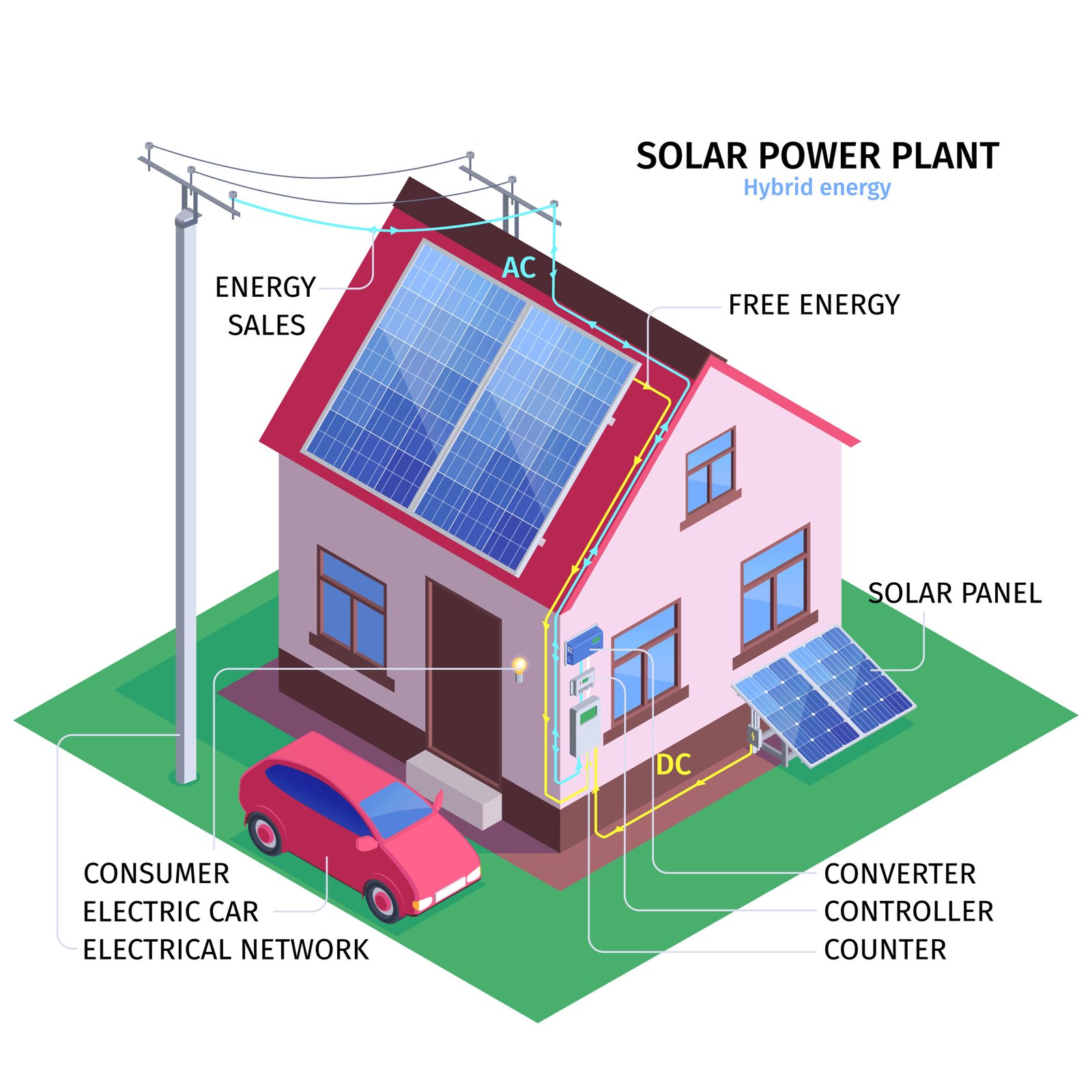Introduction
Switching to solar energy is not just a trend; it’s a smart, sustainable choice for homeowners looking to reduce their carbon footprint and save on energy costs. By harnessing the power of the sun, a solar system converts sunlight into electricity, offering an environmentally friendly alternative to fossil fuels. If you’re considering installing a solar system in your home, understanding the basic requirements is crucial for a successful transition.
Understanding Solar Energy
Solar energy is a renewable energy source derived from the sun’s radiation. Solar panels, composed of photovoltaic (PV) cells, capture sunlight and convert it into direct current (DC) electricity. This DC electricity is then converted into alternating current (AC) by an inverter, making it usable for household appliances and systems.
Benefits of Installing a Solar System
The benefits of installing a solar system are manifold:
- Environmental Benefits: Solar energy reduces greenhouse gas emissions, decreases air pollution, and lessens reliance on non-renewable resources.
- Financial Savings: After the initial installation cost, solar systems can significantly reduce or even eliminate electricity bills. Over time, the system pays for itself.
- Energy Independence: With solar power, homeowners can produce their own electricity, reducing dependence on the grid and protecting against energy price increases.
Assessing Your Home’s Solar Potential
Before installing a solar system, evaluate your home’s suitability:
- Roof Condition and Space: Ensure your roof is in good condition and has enough space to accommodate solar panels. Panels typically last 25-30 years, so a sturdy roof is essential.
- Sun Exposure and Shading: Analyze the amount of sunlight your roof receives daily. Trees, buildings, and other structures can cast shadows, reducing panel efficiency.
- Local Climate Considerations: While solar panels work in various climates, areas with higher sun exposure will generate more electricity.
Types of Solar Systems
- Grid-Tied Systems: Connected to the local utility grid, these systems allow you to draw power from the grid when solar production is low and send excess power back, often earning credits.
- Off-Grid Systems: Independent of the grid, these systems rely on battery storage to supply power, ideal for remote areas without grid access.
- Hybrid Systems: Combine grid-tied and off-grid features, providing the flexibility of grid power and battery backup.
Components of a Solar Power System
A typical solar power system includes:
- Solar Panels: Capture sunlight and convert it to electricity.
- Inverter: Converts DC electricity to AC.
- Mounting System: Secures panels to the roof.
- Battery Storage: Stores excess power for use when solar production is low.
- Monitoring System: Tracks system performance and energy production.
Choosing the Right Solar Panels
When selecting solar panels, consider:
- Monocrystalline vs. Polycrystalline Panels: Monocrystalline panels are more efficient and space-efficient, while polycrystalline panels are typically less expensive.
- Efficiency Ratings: Higher efficiency panels produce more electricity but may come at a higher cost.
- Warranty and Durability: Look for panels with long warranties and proven durability to ensure long-term performance.
Inverter Options and Importance
Inverters are crucial for converting DC to AC electricity. Options include:
- String Inverters: Cost-effective and suitable for homes with minimal shading.
- Microinverters: Offer higher efficiency and performance, especially for roofs with shading issues.
- Power Optimizers: Enhance the performance of string inverters by optimizing the output of individual panels.
Understanding Battery Storage
Battery storage adds flexibility and reliability:
- Benefits of Battery Storage: Provides backup power during outages and maximizes the use of solar energy.
- Types of Batteries: Lithium-ion batteries are more efficient and have a longer lifespan than lead-acid batteries.
- Capacity and Lifespan: Consider the battery’s capacity (measured in kilowatt-hours) and expected lifespan when making a choice.
Installation Process
A seamless installation process involves:
- Selecting a Certified Installer: Choose a reputable installer with certifications and positive reviews.
- Permits and Regulations: Obtain necessary permits and comply with local regulations.
- Installation Timeline: The process typically takes a few weeks, from planning to completion.
Cost Considerations
Understanding the financial aspects is key:
- Initial Investment: Includes the cost of panels, inverters, batteries, and installation.
- Incentives and Rebates: Look for federal, state, and local incentives that can reduce upfront costs.
- Return on Investment (ROI): Calculate long-term savings to determine the ROI of your solar system.
Maintenance and Monitoring
Keeping your system in top shape involves:
- Routine Maintenance Tips: Regularly clean panels and inspect for damage.
- Monitoring System Performance: Use monitoring systems to track energy production and identify issues.
- Troubleshooting Common Issues: Address problems promptly to maintain efficiency.
Safety Considerations
Ensure safety during and after installation:
- Electrical Safety: Proper wiring and connections prevent electrical hazards.
- Structural Integrity: Ensure your roof can support the weight of the panels.
- Fire Safety: Use certified equipment and follow installation guidelines to minimize fire risk.
Conclusion
Installing a solar system for your home is a rewarding investment that offers significant environmental and financial benefits. By understanding the basic requirements and carefully planning each step, you can enjoy the advantages of clean, renewable energy for years to come.
FAQs
How long does a solar panel system last?
Solar panel systems typically last 25-30 years, with proper maintenance extending their lifespan.
What happens during a power outage?
Grid-tied systems will shut down during a power outage for safety reasons, but systems with battery storage can continue to supply power.
Can I install a solar system myself?
While DIY installation is possible, it’s recommended to hire a certified installer to ensure safety and compliance with local regulations.
How much can I save with solar panels?
Savings vary based on location, energy usage, and system size, but many homeowners see significant reductions in their electricity bills.
Is my home suitable for solar panels?
Evaluate your roof’s condition, sun exposure, and local climate to determine if your home is suitable for solar panels. A professional assessment can provide detailed insights.

